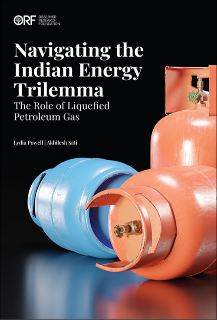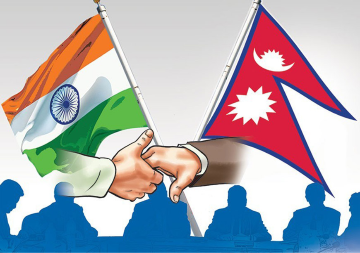
Cooperation in defence is the route to strengthen the bilateral relations between India and Russia. Russian President Vladimir Putin’s visit to India earlier this month reaffirmed this as an important pillar in their ‘Special and Privileged Strategic Partnership’. India and Russia concluded the contract for S-400 ‘Triumf’ missile systems, one of the biggest defence deals in recent times. It has concluded at a time where the US has been threatening sanctions on countries dealing with its adversaries through CAATSA Act (Countering America's Adversaries Through Sanctions Act). There are expectations that more defence deals would be announced when Mr. Modi and Mr. Putin will meet in November 2018 on the sidelines of the G20.
India Russia Defence Cooperation
Cooperation in defence between India and Russia dates back to 1962, when the Indian Air Force (IAF) opted for the MiG-21 from the Soviet Union over several other western competitors. This was also accompanied by a license transfer which had allowed its production in India. This process continued with the MiG-23 and the MiG-27 aircraft and reached its highest level with the implementation of the Su-30MKI programme. Russia was cooperating with India in other projects as well, such as shipbuilding and production of T-72C and T-90C tanks for the Indian Army. The BrahMos project has helped India in not only strengthening security but also in improving its defence manufacturing capabilities. Although India has temporarily withdrawn from the joint project for the development of 5th generation fighter jets, Russia is willing to re-open talks on the project.
In the previous years, India and Russia had inked several preliminary agreements -- for five regiments of S-400 Triumph long-range anti-aircraft missile system, 48 Mi-17v5 helicopters, 200 Ka-226T helicopters (of which 140 would be made in India) and four Project 1135.6 frigates (two of which would also be manufactured locally). But only the deal for the S-400 missile system has been concluded as yet. The failure to conclude two major deals during Putin’s visit, for stealth frigates and assault rifles, which were reportedly ready, is a matter of concern for the Russians. In the Indian side, there were apprehensions that if these deals went through, India would find it even more difficult to get the waiver from the US sanctions under the CAATSA Act.
Even though India has started diversifying its defence procurements, Russia still remains the most important partner when it comes to defence and security of India. There are various reasons for this. First, India needs Russia for military spare parts. Second, Russia is one of the few countries who has shown the willingness to provide certain technologies like nuclear powered submarines. Third, the conditions imposed by western nations with the supply of their equipments are much harsher than that of Russia. Russia has also launched a military modernisation programme which has provided with an opportunity to further deepen the defence cooperation between the two countries.
Russia’s military modernisation programme
Post Cold War, Russia’s military had lost the edge it possessed during the Soviet era. This could be seen from the critical vulnerabilities exposed during the Georgian war of 2008. Russia, thus, launched an ambitious State Armament Programme (GPV 2020) in 2010 during which it planned to spend 300 billion USD per year for a period of 10 years. This programme envisaged reforms at three levels: personnel, equipment and military industrial complex. The result of this programme can be seen from the successes of the Russian army in its military intervention in Syria and Crimea. Russian military didn’t face any resistance in Crimea because it no longer relied on massive troop mobilisation which had no element of surprise. Thus a change in mindset as well as tactics could be seen in these interventions.
The advancement that Russia has made with its State Armament Programme was also visible during the recently concluded massive military exercise, Vostok 18, which Russian officials claimed to be the largest exercise since the end of the Cold War. China and Mongolia also participated in this military endeavour. It was conducted at a time when Russian President Putin had signed Russia’s much awaited State Armaments Programme, 2018-27 (GPV 2027). In January this year, Russia’s Ministry of Defence confirmed that a total of 20 trillion RUB (357 billion USD) would be spent on the programme. Of this, 19 trillion RUB would go in the development, procurement and repair of military equipment, and the remaining 1 trillion RUB would be used for the construction of related infrastructure.
The main emphasis of this programme is on the development of nuclear systems (modernisation of Russia’s strategic nuclear triad has always been and will always remain a priority). Upgradation of high-precision aerospace equipment and ground-to-ground weapons will occupy the centre stage. It will also focus on force mobility and deployability, military logistics and strengthening of command-and-control (C2) systems. Russia seems primed to stay ahead of its competitors in some capabilities (anti-ship missiles, electronic warfare, air defences) and narrow the gap in areas such as drones and precision-guided munitions. Russia, therefore, has sent an important message that its military is transforming and is capable of defending itself from external threats.
The Indian military is grappling with several problems like inefficient research and development, lack of indeginisation in crucial areas, insufficient military infrastructure etc. Moreover, incidents like the Dokhlam standoff with China has put lots of pressure on Indian leadership to modernise quickly in order to face these kinds of threats effectively as well as to act as a deterrence to stop its neighbours from pursuing military adventurism. The draft defence production policy released by New Delhi in 2018 envisaged India to gain self-sufficiency in the development and manufacturing of many weapon systems like Missile systems, Electronic Warfare (EW) systems, Communication systems etc. It also envisioned India to become a global leader in military cyberspace and AI technologies. Russia can bring in its expertise in these areas and help India in its objectives. Therefore, New Delhi should closely align with Moscow to gain from its defence modernisation programme.
Thus the areas for cooperation are many. New Delhi needs to do a careful analysis of the bottlenecks that are coming in its way of deepening cooperation and capitalise on the progress made by Russia from its modernisation programme.
The writer is a Research Intern at Observer Research Foundation, Delhi
The views expressed above belong to the author(s). ORF research and analyses now available on Telegram! Click here to access our curated content — blogs, longforms and interviews.




 PREV
PREV

